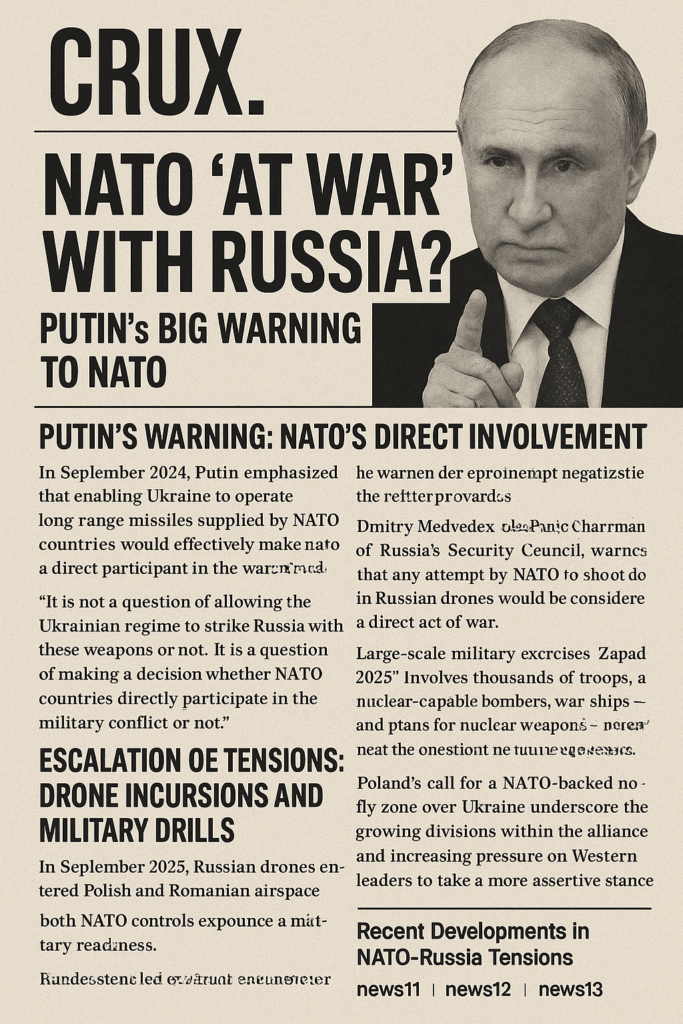Jai Siya Ram
Russian President Vladimir Putin has issued a stark warning that any Western decision to allow Ukraine to use long-range missiles against targets within Russian territory would mark NATO’s direct involvement in the conflict, potentially escalating it into a broader war.
Putin’s Warning: NATO’s Direct Involvement
In September 2024, Putin emphasized that enabling Ukraine to operate advanced missile systems supplied by NATO countries would effectively make NATO a direct participant in the war. He argued that such systems require NATO personnel to program flight paths, thereby implicating the alliance in hostilities against Russia. Putin stated, “It is not a question of allowing the Ukrainian regime to strike Russia with these weapons or not. It is a question of making a decision whether NATO countries directly participate in the military conflict or not”
Escalation of Tensions: Drone Incursions and Military Drills
Tensions escalated further in September 2025 when Russian drones entered Polish and Romanian airspace, both NATO member countries. These incursions prompted NATO to activate air defense systems and increase military readiness along its eastern borders. In response, Dmitry Medvedev, Deputy Chairman of Russia’s Security Council, warned that any attempt by NATO to shoot down Russian drones would be considered a direct act of war.
Simultaneously, Russia conducted large-scale military exercises, known as “Zapad 2025,” in collaboration with Belarus. These drills involved thousands of troops, nuclear-capable bombers, and warships, and included plans for the use of nuclear weapons. The exercises raised alarms within NATO due to the deployment of advanced missile systems like the Oreshnik, capable of carrying both conventional and nuclear warheads, and the extension of Russia’s nuclear umbrella to Belarus.
The Path Forward: Diplomatic Efforts and Military Posturing
While diplomatic channels remain open, the situation continues to be precarious. The United States and European leaders have expressed reluctance to escalate the conflict by allowing Ukraine to use long-range missiles against Russian targets. However, Poland’s call for a NATO-backed no-fly zone over Ukraine underscores the growing divisions within the alliance and the increasing pressure on Western leaders to take a more assertive stance.
As of now, the conflict remains a complex and volatile standoff, with the potential for further escalation if diplomatic efforts fail to yield a resolution.


